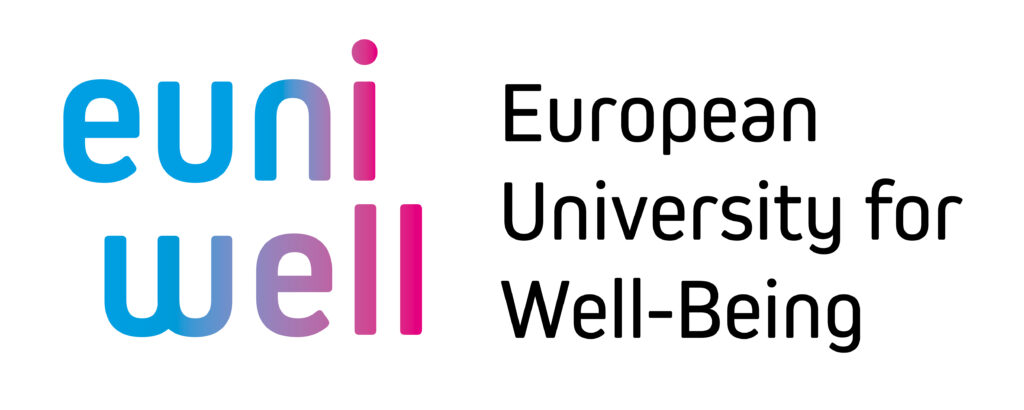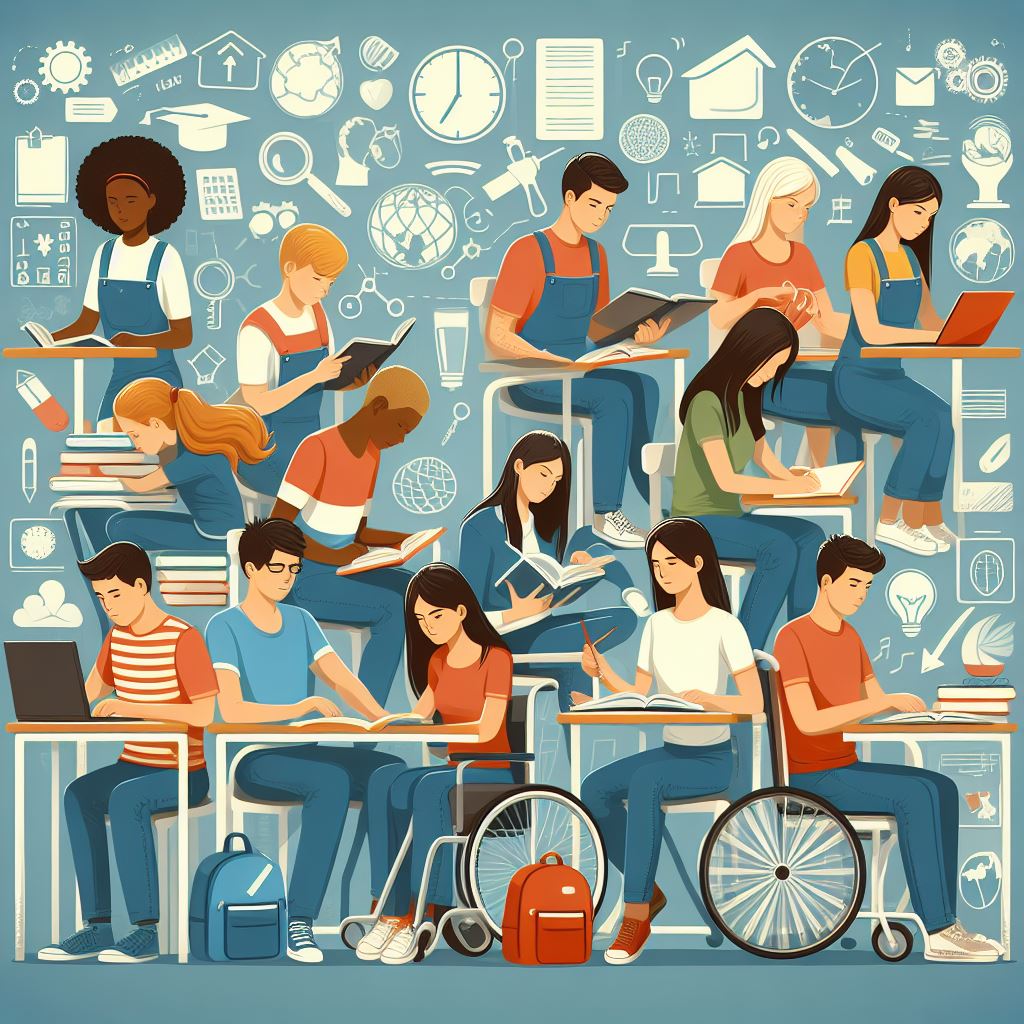Imagine a law student at a university. This student has to attend many lectures and seminars in the fields of civil law, criminal law and public law, acquire competences and prove these in various types of examinations. You can probably also imagine that the student perceives the learning opportunities as having varying degrees of success. She may be enthusiastic about the lecture on family law and the associated materials, whereas in the course on media law she will feel that she is not acquiring the necessary knowledge and skills.
What can the student do in the case of media law? She can find out or think about what is relevant to her exam or what she is particularly interested in and set herself a learning goal. The next step is to determine how she can achieve her personal learning goal, i.e. how she can learn what she misses in the actual course. During the learning process, she must monitor whether she is adhering to the chosen learning methods and strategies. She then reflects on whether she has actually (sufficiently) expanded her competences or whether she needs to make adjustments at some point, e.g. plan more learning time, use a different learning strategy or use other sources for learning materials.
Students’ thoughts and actions are referred to as self-regulated or self-directed learning. The ability to self-regulate learning becomes all the more relevant the more demanding the educational goals are, but it is also a prerequisite for lifelong learning.
A major goal of formal education should be to equip students with the intellectual tools, self-beliefs, and self-regulatory capabilities to educate themselves throughout their lifetime. These personal resources enable individuals to gain new knowledge and to cultivate skills either for their own sake or to better their lives. The rapid pace of technological change and accelerated growth of knowledge are placing a premium on capability for self-directed learning. (Bandura 1993, 136)
There are various models of self-regulated learning with different focal points or components. One phase model comes from Schmitz et al. 2007 (article in English: Schmitz, Wiese 2006). Here, a distinction is made between three phases, which our students also went through:
- Precation phase: setting goals, choosing a strategy and planning actions
- Action phase: learning action, implementation of strategies, maintenance and optimisation of action execution, self-observation
- Postaction phase: evaluation of action results, comparison with planning phase and possible modifications for subsequent learning cycles
Dyrna (2021) identifies 9 dimensions of self-directed learning, i.e. areas in which learners have options for decision-making and action: Learning goals, learning content, learning sources, learning methods, learning path (chronological sequence), learning evaluation, learning partners, learning time, learning location.
So what does self-regulated learning have to do with open educational materials? The law student has thought about learning goals and learning content. She could now traditionally search the university library’s database to find out which printed or digital textbooks are available. However, she decides to look for suitable learning sources on the Internet: teaching and learning materials that are at least freely accessible or openly licensed under a Creative Commons licence and can therefore be reused on a large scale.
The student searches in a national OER portal that specialises in higher education. She finds three suitable entries and now has to decide which learning source she wants to use. She must therefore review the three options and choose the one that will best achieve her learning objective. She decides in favour of a series of interactive videos. She has also found a quiz that she wants to take as a self-test at the end (learning method). Thanks to this OER, she can also decide for herself when she watches the videos, for how long, at what speed, how often she completes the interactive tasks and where she does it all (learning location, learning time, learning path). She can also arrange to learn together with other people of her choice (learning partners). Here too, the learning community can decide on the learning modalities itself. After the student has completed their planned learning activities, she reflects on her learning success (learning evaluation). For example, she may decide that she has acquired sufficient competences with the OER. However, she may also has realised during the learning process which specialist questions she would like to explore in more depth. She then researches again, this time looking for learning sources for the next learning objective. She may even come up with the idea of also looking for OER on family law in order to deepen her knowledge there too – despite being satisfied with the course so far.
Learners who (want to) use OER must have a minimum level of self-direction in their learning processes if they want to learn with self-selected materials without guidance. This is because they must be aware of their learning objectives and be able to assess the suitability of the learning programme for these objectives at the latest when selecting the materials they have found. In addition, as outlined above, they make a series of decisions that influence their further learning actions and thus their learning success. However, the use of OER can lead to a significant increase in learners’ self-direction skills. The more they work with free and freely chosen learning materials, the more confidently they make the right decisions for their learning process and the better they can reflect on it. In this way, they become competent learners. For a lifetime.
The prerequisite for this is that there must be sufficient accessible and, in the case of universities, scientifically based open educational resources. Only then will learners have a choice, be able to make decisions and not just (independently) work through the prescribed learning material in the prescribed manner, at prescribed times, etc.
Translated with DeepL.com (free version). The original text is the German version.
Literature
Bandura, A. (1993). Perceived Self-Efficacy in Cognitive Development and Functioning. Educational Psychologist, 28(2), 1 17-148.
Dyrna, J. (2021). Selbstgesteuertes Lernen. Begriffsbestimmung und Operationalisierung. In J. Dyrna, J. Riedel, S. Schulze-Achatz & T. Köhler (Hrsg.). Selbstgesteuertes Lernen in der beruflichen Weiterbildung. Ein Handbuch für Theorie und Praxis. Münster, New York: Waxmann.
Schmitz, B. & Wiese, B. (2006). New perspectives for the evaluation of training sessions in self-regulated learning: Time-series analyses of diary data. Contemporary Educational Psychology, 31, 64-96.
Schmitz, B., Landmann, M., & Perels, F. (2007). Das Selbstregulationsprozessmodell und theoretische Implikationen. In M. Landmann & B. Schmitz (Hrsg.), Selbstregulation erfolgreich fördern. Praxisnahe Trainingsprogramme für effektives Lernen (S. 312–326). Stuttgart: Kohlhammer.
Wild, E. & Möller, J. (Hrsg.). (2021). Pädagogische Psychologie (3., vollständig überarbeitete und aktualisierte Auflage). Berlin: Springer.
Woolfolk, A. (2020). Educational Psychology, Global Edition. Harlow: Pearson.

